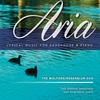Here are some handouts I give to my students. Feel free to use them however you want.
Click on the title to download the PDF file.
Click on the title to download the PDF file.
A daily routine to help you be as efficient as possible in your practice.
My recommended horns, mouthpieces, reeds, recordings, music and more
For those of you with a well developed tone and embouchure, you should be working towards extending your range into the altissimo of the saxophone. You should first do this by practicing overtones. An excellent source is Sigurd Rascher's Top Tones for the Saxophone, published by Carl Fischer, Inc. Make sure you read what he has to say, especially about the importance of "hearing" the note before you play it! Rascher's altissimo fingerings don't work on most modern horns very well so I've got a copy of my own favorite fingerings in Adobe Acrobat PDF format for you to use. These fingerings work very well on my Yamaha YAS-875 alto sax.
(A.K.A. "Five Note Exercise.") I've had the opportunity to hear and watch a number of players over the years. One of the things that I'm always having to correct are fingerings for specialized patterns and scales. One of these "problem" scales is the chromatic scale. I like to tell students that they should use fingerings that will enable them to be a "race car driver" on the saxophone. In other words, while any fingering might work at a slow speed, there are other fingerings which work at very fast speeds. So why not learn the "fastest" fingering in the beginning, rather than having to switch over when one can no longer make the slow fingering work!
Scale practice routine
Flexibility and Longtone Exercises for more advanced students. This is a great way to make sure you're doing your "Tu" vocalization correctly!
Guidelines for selecting, breaking in and adjusting reeds.
Guidelines from Phil Shapiro--my method of choice!
